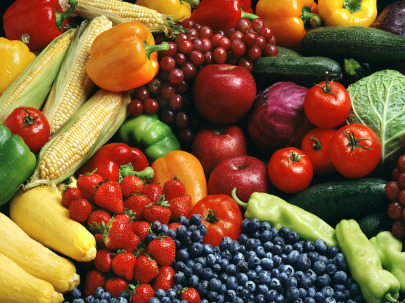
Healthy Life Newsletter January 2021
A new study suggests maintenance chiropractic care (defined by the researchers as "treatment at regular intervals regardless of symptoms") is more effective than symptomatic treatment (receiving chiropractic treatment only when you're experiencing pain).
---------------------------------------
A mindfulness-based stress reduction (MBSR) course was found to benefit patients with chronic pain and depression, leading to significant improvement in participant perceptions of pain, mood and functional capacity, according to a study in the Journal of the American Osteopathic Association. Most of the study respondents (89%) reported the program helped them find ways to better cope with their pain while 11% remained neutral.
---------------------------------------
Impact of Chiropractic Care on Use of Prescription Opioids in Patients with Spinal Pain
Pain Medicine, pnaa014, doi.org/10.1093/pm/pnaa014 06 March 2020
Objective
Utilization of nonpharmacological pain management may prevent unnecessary use of opioids. Our objective was to evaluate the impact of chiropractic utilization upon use of prescription opioids among patients with spinal pain.
Conclusions
Patients with spinal pain who saw a chiropractor had half the risk of filling an opioid prescription. Among those who saw a chiropractor within 30 days of diagnosis, the reduction in risk was greater as compared with those with their first visit after the acute phase.
To read the full abstract of this study click here
--------------------------------------
By David Seaman, DC, MS, DABCN
Ever since the coronavirus emerged and the severity of COVID-19 became obvious, various preventive measures have been promoted, including hand washing, social distancing and mask wearing. It should be understood that sanitary/hygienic measures, such as hand washing and social distancing, have always been utilized as a means to prevent viral infection transmission in private homes. When I was very young, my mother taught me to cover my mouth whenever I sneezed and then wash my hands. She also told me and my siblings to avoid the person in the house who was sick, a form of social distancing. Mask wearing is really the only new addition to the regimen.
To my surprise, mask wearing became a contentious issue and a huge amount of time has been spent on mask debating in the news and on social media. More than anything else, people believe mask wearing is the key to controlling COVID-19 until a vaccine comes along. Missing in the public conversation is a discussion about how the health of the human body influences viral infections. This has been surprising to me, as this issue was settled in the latter part of the 19th century.
The Key Determining Factor During an Infection
In the mid-to-late 1880s, both Claude Bernard and Antoine Bechamp argued that the health of the body (the terrain) was the key determining factor during an infection. Up until the end of his life, Louis Pasteur maintained that the germ itself was the determining factor with infectious disease. However, in the end, Pasteur stated, "Bechamp was right, the microbe is nothing. The terrain is everything."1
This should take you a bit by surprise, as nothing we have been told during the COVID era would lead us to a similar conclusion made by Pasteur. Instead, we have been treated to the notion that the virus is all-powerful and should be feared, to the point that politicians have enforced a lockdown to varying degrees in America and abroad. Note that absolutely no authority has urged Americans to get healthy during lockdown so as to be more resilient if one does get infected with the coronavirus.
What We Should Have Been Told
For more than 100 years, scientists have known that obesity is a key determining factor for the severity of a viral infection. Indeed, this relationship was first identified during the Spanish Flu of 1918.2 Then, during the "Asian" and "Hong Kong" influenzas of the 1960s, scientists confirmed that obesity and diabetes lead to more deaths, and a prolonged duration of illness.2
This relationship was again confirmed in 2009 during the H1N1 flu (swine flu).2 Not surprisingly, the same holds true for COVID-19, as outlined on the CDC's website:3
- Obesity increases the risk of severe illness from COVID-19.
- Obesity may triple the risk of hospitalization due to COVID-19.
- Obesity is linked to impaired immune function.
- As BMI increases, the risk of death from COVID-19 increases.
- Obesity has been linked to lower vaccine responses, such as the seasonal flu, hepatitis B and tetanus.
We also know that infected obese people are more contagious because the inflammatory state of obesity reduces the ability of the body to eliminate viruses, such that obese people shed viruses up to 100 percent longer than lean people.2 The inflammatory obese body also produces viral mutations that are more virulent.2 In other words, obese people are the primary COVID vectors.
With the above in mind, there should be no doubt that Americans should have been told to lose weight and normalize blood glucose levels while locked down. But this did not happen, even though it is well-known that stressed-out people overeat and gain weight.4
So, not surprisingly, many people gained weight during lockdown, which is potentially catastrophic for America, as 42 percent of the population was obese before the coronavirus emerged at the end of 2019.5 This means lockdowns have created an even fatter population that is far more likely to spread viral infections during this fall / winter season. And unfortunately, this means these same people are likely to die needlessly because the coronavirus will join the flu virus this season.
The Elephant in the Living Room - And What We Can Do About It
Clearly, obesity is the elephant in the COVID living room that authorities and news outlets are not talking about. Perhaps such silence exists because obesity is an important part of the multi-trillion-dollar disease industry. Without obesity, people would need fewer medications, medical visits, and medical interventions, which would mean less income for the disease industry and its funding banks. (With this in mind, you should know that leading international investment banks, such as Goldman Sachs, have questioned whether curing patients is a sustainable business model.)6
Here is a COVID fact that everyone should know about. As of Nov. 4, 2020, when I wrote this article, there were about 1,700 COVID deaths in Japan, which has a population of 126 million and obesity rate of just 3.6 percent. For perspective, the state of California has a land mass smaller than Japan and a population of 39.5 million, with an obesity rate of 25 percent and 17,500 COVID deaths as of Nov. 4.
Consider these numbers carefully. Japan has more than three times the population of California and has 10 times fewer deaths. This outcome illustrates what we have known for over 100 years: Lean populations are minimally compromised by viral infections compared to populations that are obese, like America.
To save America from COVID-19 and future novel viruses, we need to immediately reduce obesity and hyperglycemia. This can be achieved with a vegan or omnivore diet, or even the more extreme carnivore diet.7 Refined food calories need to be replaced with whole foods, the most important being vegetation, as it is low in calories and nutrient dense.
Key immune-supporting supplements should also be considered, including vitamin D, vitamin C and zinc, which all offer anti-inflammatory benefits.8 Additional supplements to consider include fish oil, magnesium, ginger/turmeric, iodine, and coenzyme Q10, which also promote an anti-inflammatory state.7-8
Go here to read this article on line and to see the references.
--------------------------------------
--------------------------------------
Convinced you can't lose weight because you're too old? Think again. Research suggests seniors – even obese ones – can lose weight as successfully as their younger peers.
When the two groups were compared post-intervention, they were statistically equivalent in terms of weight loss, with patients ages 60 and older reducing body weight by 7.3 percent, on average, compared to 6.9 percent in patients younger than age 60. Reductions in body-mass index (BMI) were also similar between the two groups: 8.1 percent for members of the younger group vs. 7.8 percent for members of the older group. Study findings appear in a recent issue of the peer-reviewed research journal Clinical Endocrinology.
--------------------------------------
--------------------------------------
We've heard great deal lately (although not nearly enough) about the power of vitamin D for strengthening the immune system. After all, with COVID-19 still racing around the globe, immune health is a key prevention tool that has been shown to help the body fight colds, viruses and foreign invaders of all varieties.
Do you know if you're getting enough vitamin D every day? Have you had your blood levels checked? Do you know the best sources of vitamin D ... and whether you should take a D3 supplement? Talk to your doctor to get the answers to all your vitamin D questions.
(Note from Dr. Mha Atma: Other studies have shown a more marked reduction of cancer risk when they evaluated actual blood levels of vitamin D instead of just giving everyone 2,000 IU/day. Most people need more than that (5 to 10,000/day) to achieve optimal anti-cancer levels, and overweight folks especially need more since D is stored in fatty tissue.)
--------------------------------------
You can read another article, "More Vitamin D, Lower Risk of Severe COVID-19?" on WebMD, about vitamin D and Covid-19, at https://www.webmd.com/lung/news/20200518/more-vitamin-d-lower-risk-of-severe-covid-19


